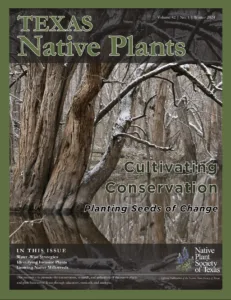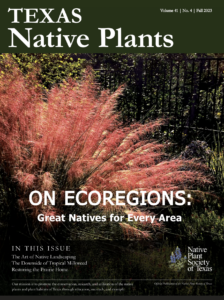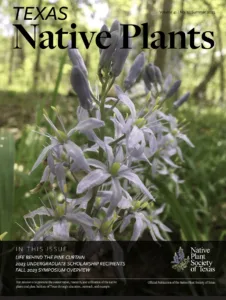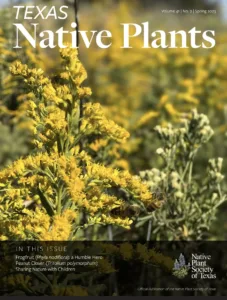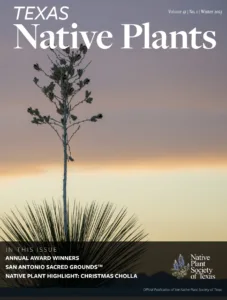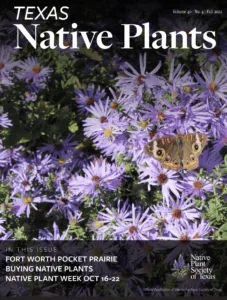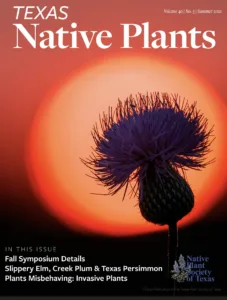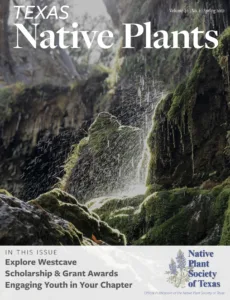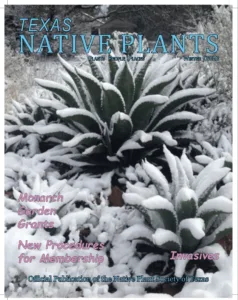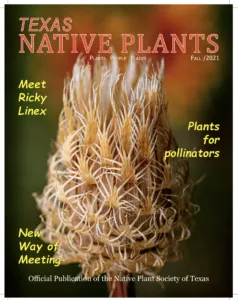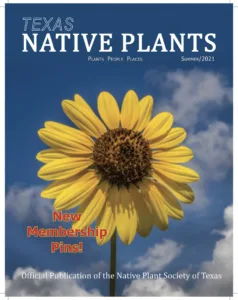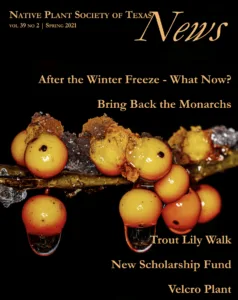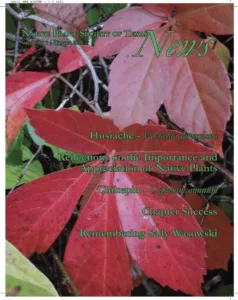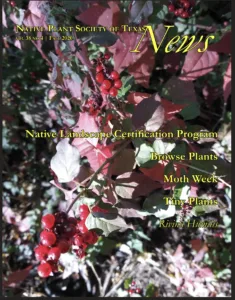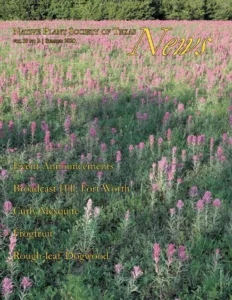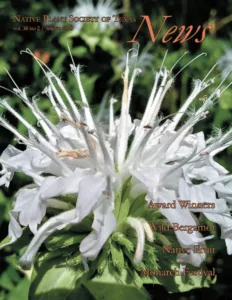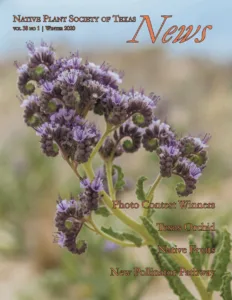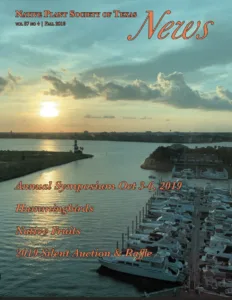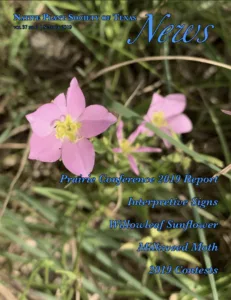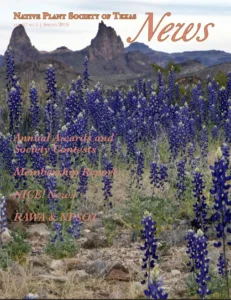Latest Issues
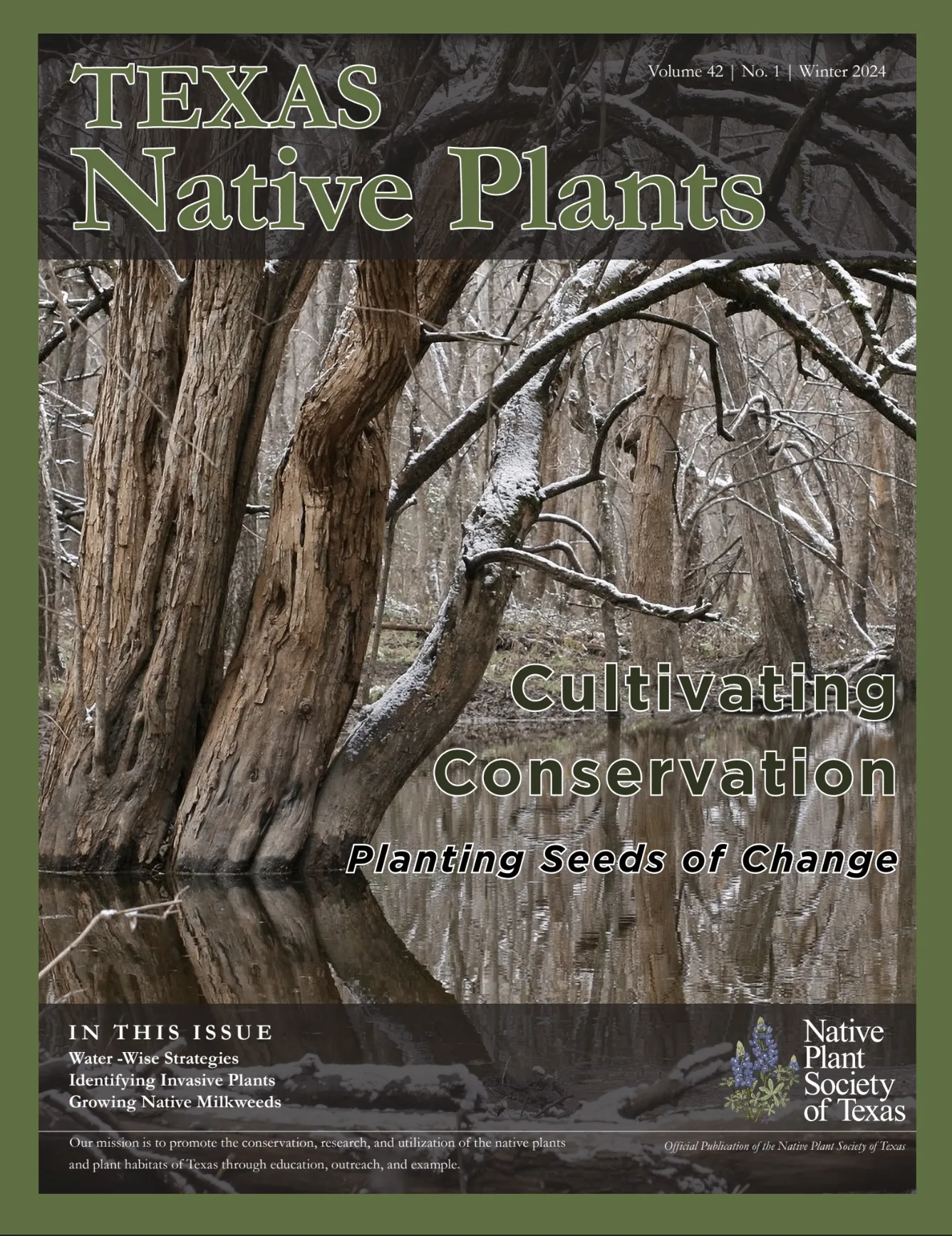
Winter 2024 Member Magazine
From Pines to Petals: Exploring the Pineywoods | 2023 Society Award Recipients | No-Freeze Trees | Water-Wise Strategies | Conservation Champions | Power Plants for Pollinators | Using the Invasive Plant Database | Coming Soon: More Native Milkweed! | Native Gardens are For the Birds | Native Plants Thriving in Town Hall | Promoting Native Milkweeds | Engaging the Next Generation | Native Plant Student Art Showcased | If You Know What to Look For
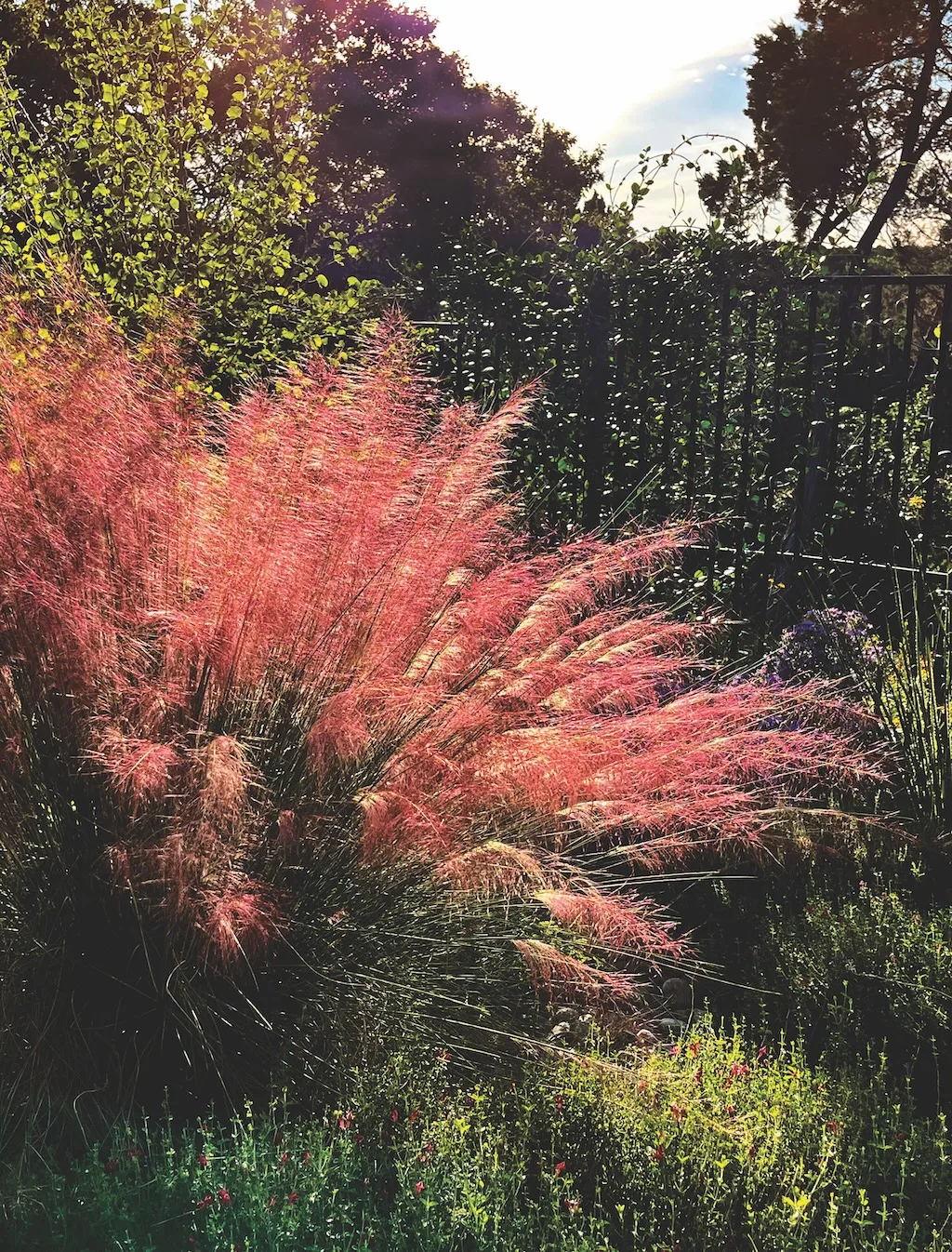
Fall 2023 Member Magazine
Texas really IS like a whole ‘nother country. Its sheer size, variety of terrain, and biological diversity is staggering. The great Lone Star state contains barrier islands and coastal lowlands, large river floodplain forests, rolling plains and plateaus, forested hills, deserts, and a wide variety of aquatic habitats.
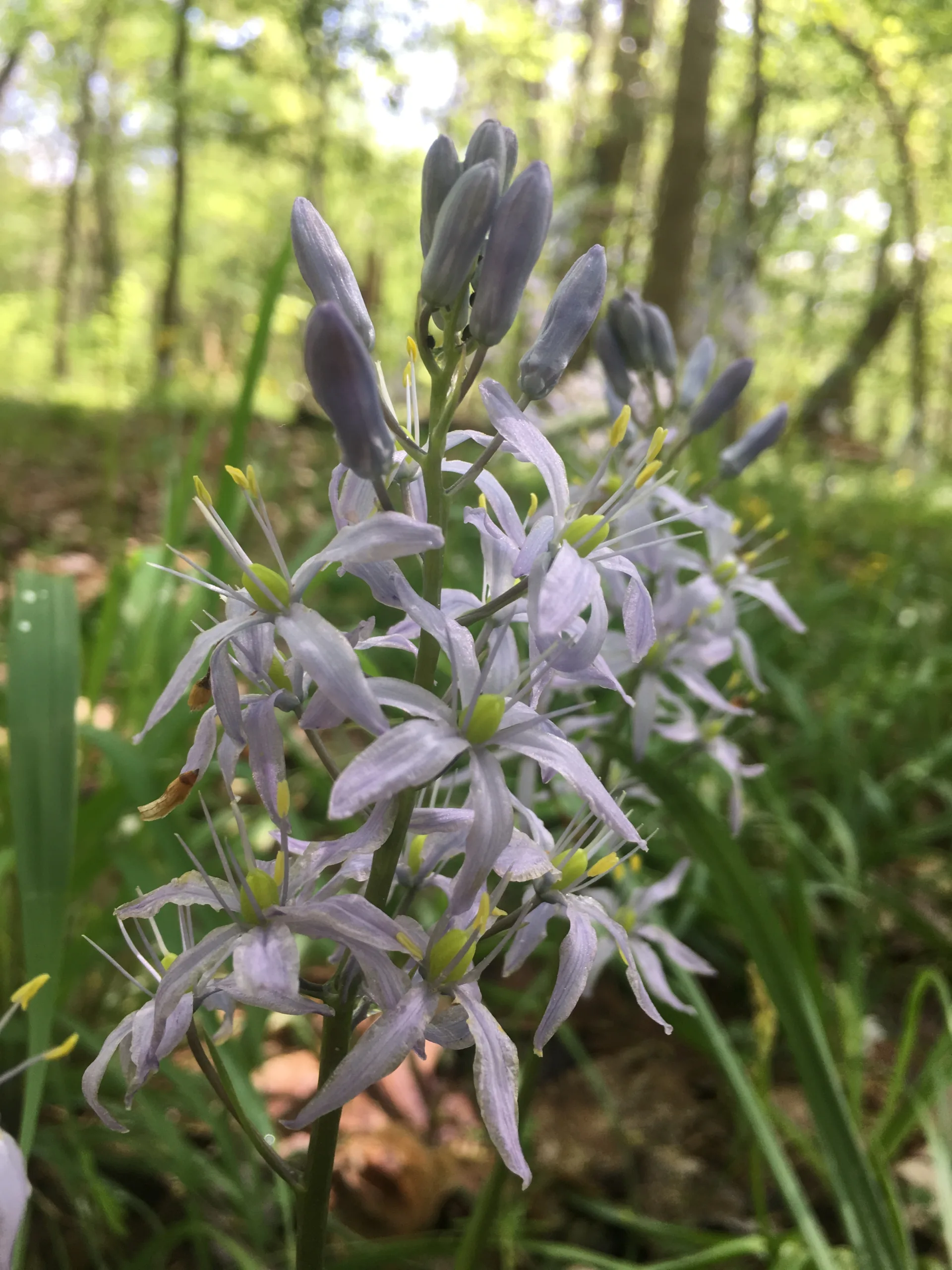
Summer 2023 Member Magazine
Our mission is to promote the conservation, research, and utilization of the native plants and plant habitats of Texas through education, outreach, and example.
Distribution
- Texas Native Plants is published quarterly and the digital version is distributed free to all Society members in current standing.
- The digital version is also available in our library below.
- Print versions are mailed at no cost to Society members in current standing who select to receive a print copy when they join/renew.
- Libraries, educational institutions and other organizations may qualify to receive the publication for a $5 annual fee.
- Contact the membership coordinator.
- Many of our chapters publish their own newsletters and websites.
- These have their own deadlines and guidelines. See list of chapters.
History
Since its founding the Society has provided a news periodical to its members. there have been a variety of names and formats. The Texas Wildfower Newsletter edited by Carroll Abbott served as the first newsletter. He advocated the formation of the Native Plant Society of Texas in his quarterly publication Texas Wildflower Newsletter. After the Society was created in 1980, a free subscription to Abbott’s newsletter was provided as a benefit to all members. His declining health eventually prompted Abbott to request that the Society start its own newsletter. Lean more about the Carroll Abbott story.
Beginning in 1983 our own official publication has documented the evolution of the native plant movement and the Native Plant Society of Texas. The publication has had several slightly different names and formats over the years. By 2005 it had evolved into a full-color glossy magazine.
Editorial Submissions
The Native Plant Society of Texas encourages submission of articles, photos, pertinent news or other interesting information for publication.
- Submit articles or written items as email attachments.
- Send photos as email attachments in JPG, RAW or TIFF format.
- Larger file size and best quality are preferable.
- Contact the Editor for more information.
We reserve the right to edit all submissions for accuracy, relevance, length, grammar or for other reason. In matters of style our print publication generally follows the Chicago Manual of Style.
Unless prior arrangements with the editor are made, submissions may also appear on our website and linked on our social media pages. We do not accept outside advertising in any of our publications.
Publications Library
Click below to view issues by year/editor. Or visit our online archive.
2024 – Winter
- Water -Wise Strategies
- Identifying Invasive Plants
- Growing Native Milkweeds
2023 – Fall
- Texas Ecoregions Thrive with Native Plants
- The Art of Native Plant Landscaping: From Mistakes to Mastery
- Choose Native over Tropical Milkweed
- Restoring My Prairie Home
- Choosing Nature’s Best
- Honoring a Historic Site with Native Plants
- Member Success Story: Be the Change
- Garden Signs Are Well Received
- Native Plants Shine at HOA Event
- Container Gardening with Native Plants
- My Journey with Native Plants
2023 – Summer
- Arboretum San Antonio
- Life Behind the Pine Curtain
- Featured San Antonio Member
- 2023 Scholarship Recipients
- Eradicate Bastard Cabbage
- Annual Contests
- Landscaping’s Many Myths
- Open Exec. Officer Positions
- Tyler Chapter Restarting
- Fall Symposium Overview
- Links You May Have Missed
2023 – Spring
- In Praise of Demonstration Gardens
- Frogfruit (Phyla nodiflora): A Humble Hero
- Sharing Nature with Children
- The Lawn Dilemma
- Never Forget Garden
- Peanut clover (Trifolium polymorphum)
2023 – Winter
- Annual Award Winners
- San Antonio Sacred Grounds
- Christmas Cholla
2022 – Fall
- Fort Worth Pocket Prairie
- Buying Native Plants
- Texas Native Plant Week
2022 – Summer
- Fall Symposium Details
- Slippery Elm, Creek Plum & Texas Persimmon
- Plants Misbehaving: Invasive Plants
2022 – Spring
- Explore Westcave
- Scholarship & Grant Awards
- Engaging Youth in Your Chapter
2022 – Winter
- Invasives
- New Membership Portal
- New NLCP Coordinator Linda Foss
2021 – Fall
- Meet Ricky!
- Plants for pollinators
- Virtual meetings
2021 – Summer
- Member Pins
- Identifying Milkweed Species
- Native Mulberries
2021 – Spring
- Trout Lily Walk
- Velcro Plant
- After the Winter Freeze – What Now?
2021 – Winter
- Huisache
- Remembering Sally Wasowski
- Chiltepin – Capsicum annuum
2020 – Summer
- Broadcast Hill
- Curly Mesquite
- Frogfruit
- Roughleaf Dogwood
2020 – Spring
- Native Fruit
- Wild Bergamot
- Monarch Festival
2020 – Winter
- New Pollinator Pathway
- Photo Contest Winners
- Texas Orchid
2019 – Fall
- Hummingbirds
- Native Fruits
- Annual Symposium
2019 – Summer
- Contests for photos, videos and newsletters
- Willowleaf Sunflower
- Milkweed Moth
2019 – Spring
- Annual Awards & Contests
- Membership Report
- News About NICE
- RARA and NPSOT

